Now & New
- Explore
Marine Day at Matoba and Mitarai: Setouchi Seascapes from Two Sides
Ah, July, a time of year when students—and those who work in education—eagerly anticipate the summer break, and workers who have to wait until Obon to kick back get a pre-game long weekend thanks to Marine Day. Marine Day is a public holiday devised by the Japanese government to entice its citizens to take a day off to go see the sea and celebrate Japan’s maritime culture and traditions. Since 2003, Marine Day has always fallen on the third Monday in July to secure a long weekend for conventional, full-time employees who get Saturday and Sunday off in the first place. As you may imagine, the first idea to pop into most people’s minds (at least the minds of those who care about the reason behind the holiday) is to visit a local beach, and I wanted to do that too, but I felt like I could one-up that idea. For past Marine Days, I’ve been to harbors, coastlines, and aquaria, but this year, rather than simply be beside the sea or overlooking it, I wanted to be on it, which prompted me to plan a ferry-based day trip.

Where in Hiroshima Prefecture could one travel by boat to fully appreciate the Seto Inland Sea, you ask? There are as many answers to that question as there are islands in the Seto Inland Sea, but the top choices would definitely include Miyajima, Okunoshima, and Kure, which I deemed too vanilla. To begin, I would first get on the JR Kure Line from Hiroshima Station, which chugs along the Setouchi coast and affords phenomenal views from the carriage windows. I would disembark at Takehara Station, but instead of walking towards the Historical Preservation District, I intended to go off the beaten path towards Matoba Beach and Takehara Port. My destination: Mitarai, a compact, Showa-esque town on the northeast side of an island called Osakishimojima. The island of Osakishimojima actually belongs to the city of Kure and can be reached by bus from Kure Station, but if I traveled by land rather than by sea, we wouldn’t have a story, now, would we?
That Ship Has Sailed
The town of Mitarai is known as an anime tourist site thanks to the series Tamayura (I’ve been obsessed with that anime recently) and the film A Letter to Momo, and I intended to scope out the exact places that made appearances in both works. Although most of Tamayura takes place in Takehara, Mitarai is the hometown of Maon Sakurada, one of the main characters, who regularly travels between the mainland and island via Takehara Port. In A Letter to Momo, the main character moves to a fictitious island called Shiojima, but take one good look at the winding streets scenery, and you’ll recognize the setting as Mitarai. That said, I had no prior experience with Takehara Port, so in all my wasted time getting lost between Takehara Station and the ferry terminal, I ended up missing the boat I intended to board.
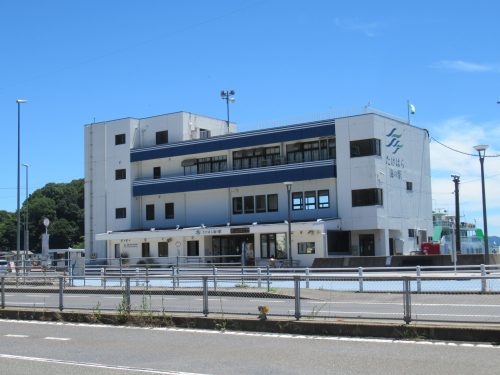
I was at a loss as to what to do, but I promptly opened up the map application on my smartphone and located an eatery in the vicinity where I could satiate my grumbling belly. It was a bit of a walk—especially considering the blistering heat—but after passing Matoba Beach and hanging a left, I saw a charming house with a blue roof across the street. Azure drapes and numerous signs lured the eyes of drivers and pedestrians to Momokichi An, a café where I decided to hang out until close to the next ferry departure.
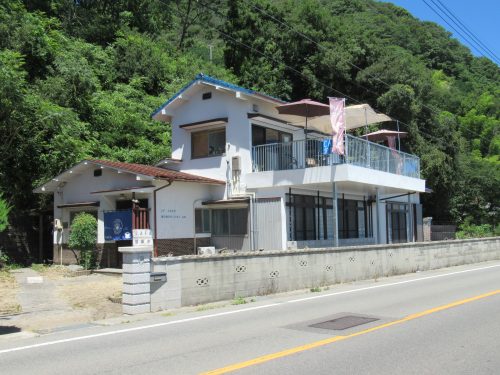
Being a café and not a full-fledged restaurant, Momokichi An specializes in desserts like cake and shaved ice, which meant it provided little in the way of lunch. The closest thing they had to a meal was pizza toast, which I gladly accepted along with a refreshing glass of iced tea. At first, I was surprised to know I was the only customer, but considering the temperatures outside, most locals probably didn’t want to leave their houses this Marine Day.
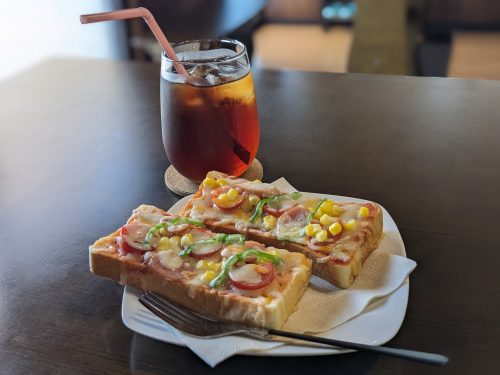
Outdoor terrace seating was available, but for reasons stated above, I opted to take my light meal indoors. It really looked like a lovely location to eat, drink, and chill while watching the waves and birds go by, but I had ample time to savor that vista while waiting on my pizza toast. Perhaps when it isn’t so sweltering, I could return to make full use of that terrace; they gave me a stamp card when I left so I will for sure be back!
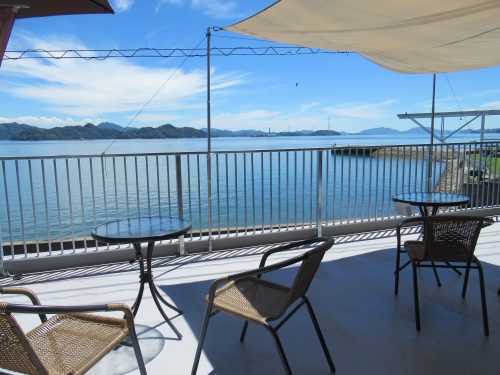
Out to Sea
As there was some time between finishing lunch and the next ferry, I backtracked to Matoba Beach to engage in some people watching (I’m rarely in a swimming mood, even in summer). Sure enough, the beach was inhabited with folks sunbathing on the sand, swimming in the sea, eating snacks, and playing ball. In addition, a food truck was selling popular concessions such as shaved ice and karaage chicken; no doubt they made a ton of money that day
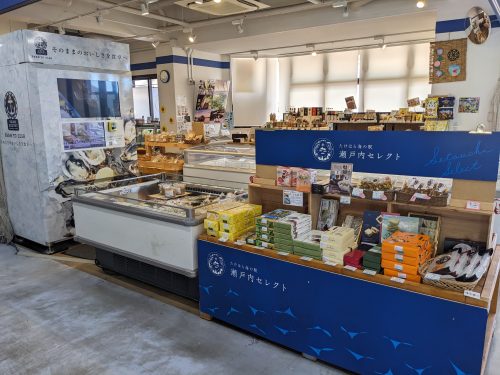
I could barely withstand the UV rays at this point, so I quit while I was ahead and made my way toward the ferry terminal. Besides the ticket counter, the facility here has a restaurant (I wasn’t impressed by the choices) and a gift shop. There were lots of Setouchi souvenirs on display, yummy soft serve ice cream for sale, and even an oyster vending machine, but I had no time to peruse, so I immediately boarded the ferry, which was a tiny, speedy vessel that reached Osakishimojima in about forty-five minutes, with several stops at Osakikamijima along the way.
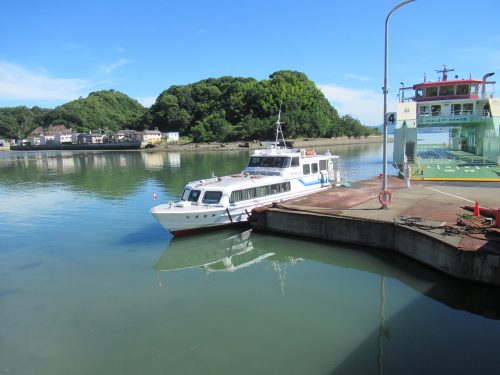
Mitarai at Sea Level
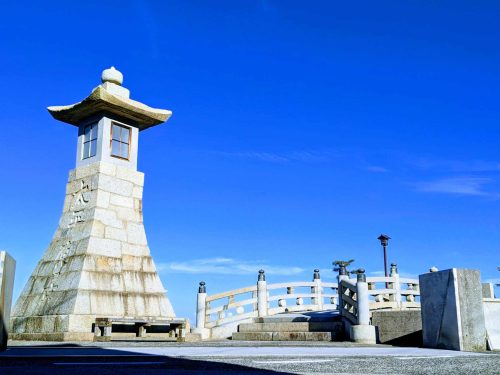
The ferry terminated at Ojo Port, as only two ferries per day (one in the morning and one in the evening) call at Mitarai Port, and I had no choice but to walk approximately twenty minutes to Mitarai. As soon as I got there, I immediately began scanning the town for places that made appearances in the aforementioned anime works. Most of the sites I wanted to see were Tamayura-related as a good number of locales were given a shout-out in the series. The first one I checked off my list was the Otome-za, an old theater in the center of town where Maon Sakurada performed, and shows happen often in its real-world counterpart. Because Otome-za is a tall building and the streets were so narrow, there was only so much distance I could put between myself and the theater, and I even had to get on the ground (whilst watching out for vehicular traffic) to get a full shot of the edifice.
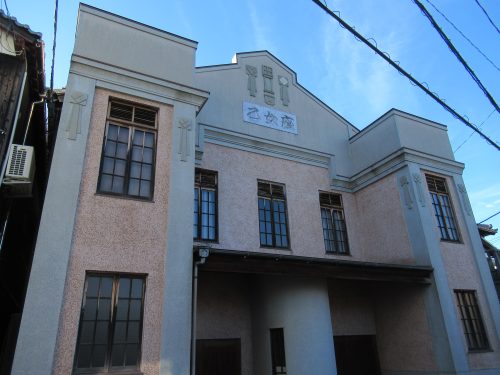
Another Tamayura site in Mitarai was the Tenmangu, a shrine where the main characters stopped to pray, and if memory serves, this might have also been the shrine where Momo, the protagonist from A Letter to Momo was hiding out during a rainstorm. I thought I would be the only visitor to a shrine this out of the way, but it turns out that there were quite a few international tourists scoping out Mitarai that day. Whether or not any of them was an anime fan on a pilgrimage is anybody’s guess. Also, may I just add that just because a rural location is in an unperturbed location doesn’t mean that it’s bound to be quiet; the deafening humming of the myriad cicadas made my ears ring and I just wanted to get my prayer over with and scram!
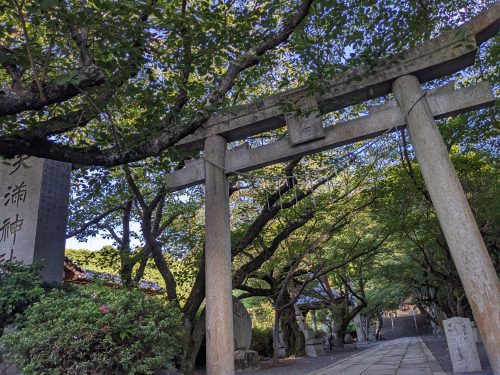
Everywhere I went throughout Mitarai, the accuracy of the anime references was uncanny and I can tell the illustrators thoroughly did their research. The labyrinthine streets looked nostalgic around every corner, and at this time of day, were all quiet as a mouse. The locals were also friendly, and possessed manners that urban Hiroshimarians have lost, such as apologizing when whizzing past on a bicycle and giving that warm “konnichiwa” that I have come to love about the Japanese countryside.
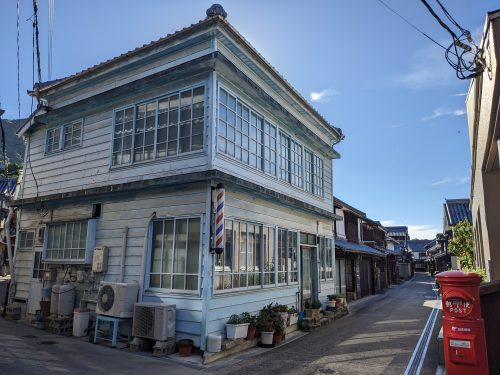
While getting lost in this Showa time capsule of a port town, I came across somebody’s house, where a farmer put fresh vegetables for sale on a bench by the front door. It’s a simple model based on an honor system: customers drop a ¥100 coin into the can (which makes a sound to indicate that a payment was made) and take any one product they wish. I bought myself a sack of twenty-something petit potatoes, which ended up contributing to a delicious curry and rice as well as a plate of home fries.

Moment of Joy: Mental Adventure
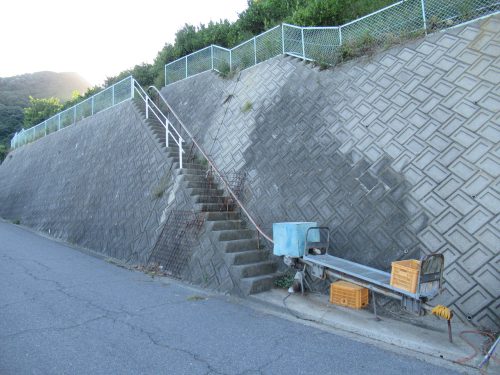
See this contraption I encountered while on my way up a hill? It’s supposedly used by farmers to transport their produce up and down the numerous terraced fields on the island, but in A Letter to Momo it was used to escape from wild boar, an attempt that ultimately failed. My original plan to end the day was to see the observation deck that appeared in Tamayura, but in the midst of my search for one anime site, I found another. The picture above might not look like much, but I was geeking out internally when I found this transport system and ended up reliving Momo’s escapade in my mind as I continued to climb towards the summit.
Mitarai Above Sea Level
When the produce-transporting doohickeys ceased to appear, I knew I was fast approaching the end of the trail. Finally, I laid eyes on a slope leading up to that iconic, spiral-shaped observation deck, and began to run up the slope. There were two ramps winding up to the top platform, where adventurers command a 360-degree view of the surrounding Seto Inland Sea, as if they were the helmsman of the island of Osakishimojima.
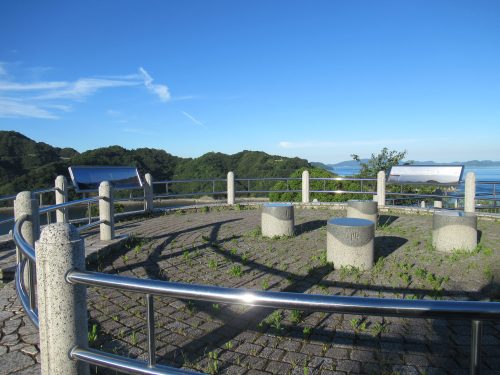
The four stone cylinders have the kanji (漢字 – Chinese characters) for the four cardinal directions carved into them so visitors know exactly what direction they are facing when spinning and staring. This was the place where the four main characters of Tamayura coincidentally met as little kids before they were all formally acquainted with each other. It’s a good location to take in the fresh island air, reflect, take pictures, or even whistle a calming tune to the Seto Inland Sea below. I had my fair share of good fun filming the sea, hills, and neighboring islands all around me, especially since nobody was up here save for me, myself, and I.
Alas, the time for me to head back to Takehara was almost upon me, and since another tourist was on his way up to where I was, I took it as a cue to skedaddle. I definitely underestimated the time it took for me to get up this hill and the time it would take for me to walk the exact same way back to Ojo Port, so by the time I reached sea level in Mitarai I found myself sprinting to make it to my ferry on time. People tend to tell me that I live on the edge, and this specific episode certainly did the opposite of proving them wrong, but all’s well that ends well. I had time to spare at Ojo Port as I awaited my return ferry, and I caught sight of a crane at the water’s edge that stuck around for a while until it was time for me to board.
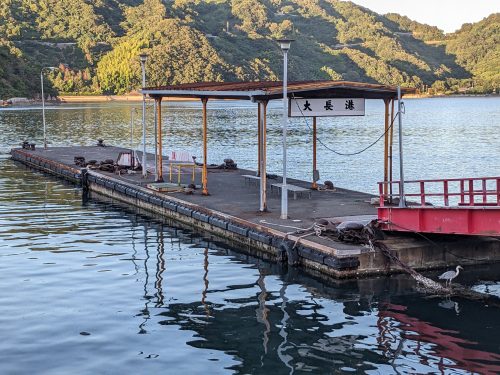
Night had fallen during my ride, and by the time I reached Takehara Port, I could barely make out the same streets that led back to Takehara Station. Thankfully, restaurants around the station were still open at this hour, so I ducked into a restaurant for dinner and took a stroll along Aifuru-dori 316 until it was time to saddle up for Hiroshima City. Some of the Tamayura décor from the Momoneko-sama Festival was still remaining, which took me aback, but seeing as Tamayura-inspired signs and cardboard cutouts are prevalent in that entire district, I suppose that wasn’t out of the ordinary.
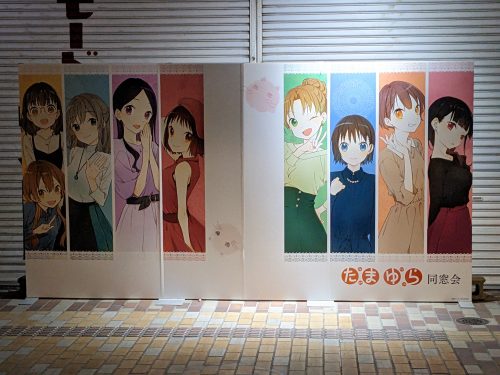
My Marine Day weekend was spent not only chilling while watching anime at home, but also living episodes and films I had seen by visiting their real-world equivalents. There are so many seaside locations I could recommend for a Marine Day vacation, but for anime nerds, Takehara and Mitarai sit near the top of the priority list. Next time you have that urge to get out of town for the long weekend but also avoid the crowds at the mainstream tourist destinations, you may consider making the journey by boat to Mitarai and getting swept away in a sea of nostalgia.
